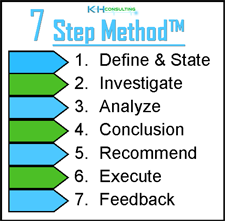Productivity Consulting
Market Evaluation

Whether the company is a start-up or in the process of reorganization market evaluation is vital in evaluating feasibility, opportunity, pricing strategy, profitability, and customer acquisition costs. Companies that don't analyze market demographics, trends, competition, barriers to entry, and related costs won't make it long-term. Industry and market conditions play an important role in deciding if and when to enter a target market. Defining potential market share and the dynamics of supply and demand are also critical components of successful market assessment.
Industry and Market Conditions
Managing industry dynamics is a fundamental need for companies geared for long-term growth and sustainability. Is the industry expanding, flat or shrinking? Depending on the relationship between product development, marketing, and sales companies have to know if they align with growth trends and opportunity. Businesses in a declining industry with slow moving product and limited development will have low value to investors or buyers and struggle to remain profitable. An ideal company looks to diversity, increase in market share, and change in market focus to ensure sustainability. Repackaging and re-bundling may be necessary to remain competitive. The answer lies in evaluation and trend analysis. We provide this as part of our diagnostic process enabling companies to support change management effectively.
Market Share
Size and segmentation of target markets help businesses to leverage core competencies and optimize internal infrastructure. Changes only happen when the nuances of market share are known. If a particular market is growing at 10% and the company is growing at 5%, then market share is lost. Conversely, if the same company grows at 15% with the market at 10%, it is in a positive growth state. Market share may not be viewed as a critical key performance indicator (KPI), but if a company has steady production in a growth market creating competitive advantage through product development, then buyers and investors will show interest. Efficiency experts seem to agree an ideal growth rate of at least 15% can be achieved through regular evaluation and consistent execution of changes within the company. Modeling can determine potential areas of growth starting with a diagnostic review of the company's current situation.
Supply and Demand
Questioning ability of the current infrastructure to support growth by expanding operations, cloning or increasing output is vital to production. Companies may have capped production in a fixed sized facility or suffer from inability to purchase raw materials to support scaling. Business owners typically think their organization can support expansion easily but a different picture may arise when seeking information from employees. Market need stagnation or decline, strained cash flow, lack of human capital growth, and sluggish sales in comparison to competitors are indicators of slowed growth and should raise alarms. Therefore, managed growth must include obtaining a complete picture of what is going on. To start the process contact us and make an appointment.

